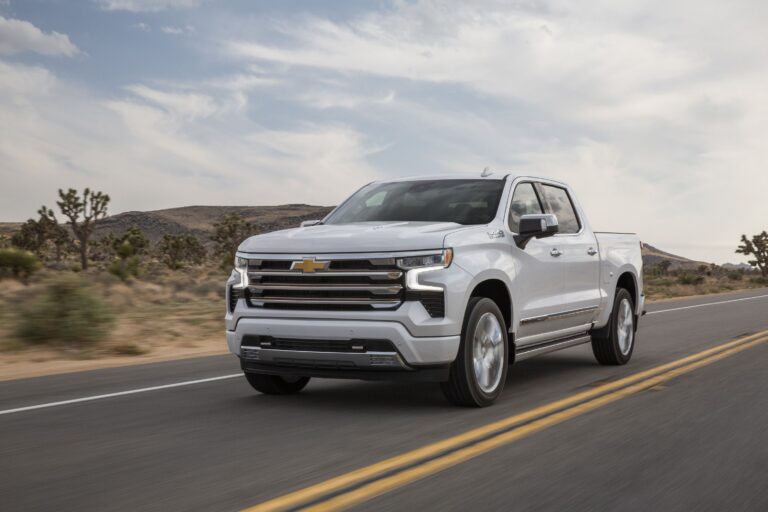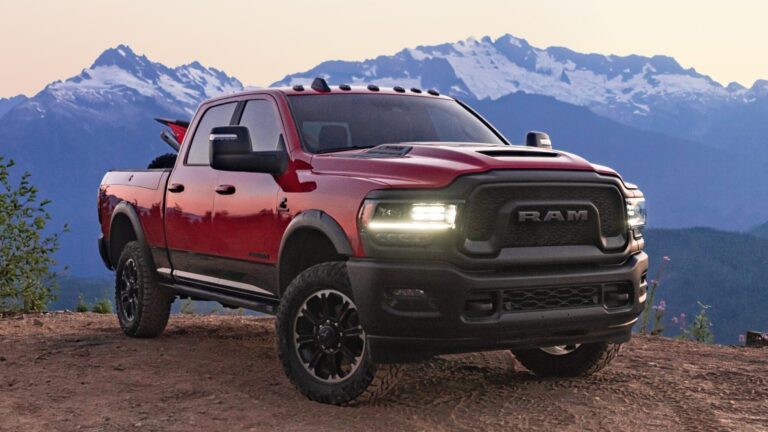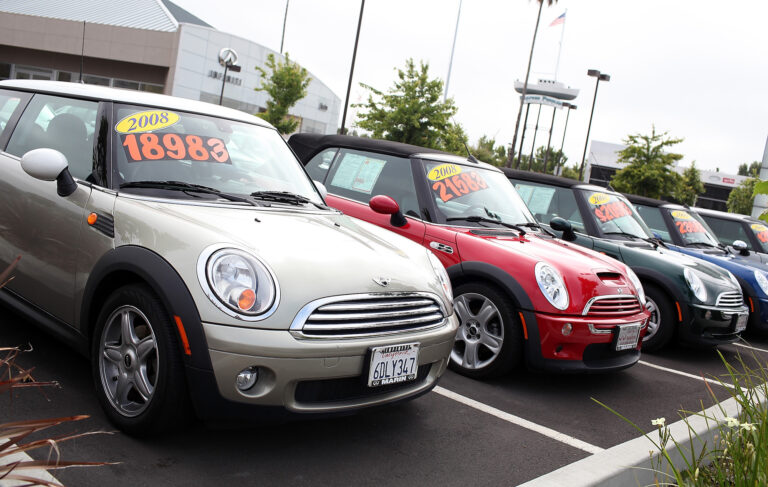High Quality Car Speaker Brands: Elevating Your Automotive Audio Experience
High Quality Car Speaker Brands: Elevating Your Automotive Audio Experience cars.truckstrend.com
For many, a car is more than just a mode of transport; it’s a personal sanctuary, a mobile office, or a stage for life’s soundtrack. While modern vehicles come equipped with increasingly sophisticated infotainment systems, the factory-installed speakers often leave much to be desired for true audio enthusiasts. This is where the world of High Quality Car Speaker Brands comes into play. Investing in premium car speakers isn’t merely an upgrade; it’s a transformative experience that elevates mundane commutes into immersive listening sessions, revealing layers and nuances in your favorite music you never knew existed.
High-quality car speakers are engineered with precision, utilizing superior materials, advanced acoustic designs, and meticulous manufacturing processes to reproduce sound with exceptional clarity, accuracy, and dynamic range. They translate the raw electrical signals from your head unit or amplifier into rich, detailed, and powerful audio, ensuring every note, beat, and vocal is delivered faithfully, free from distortion, harshness, or muddiness. This comprehensive guide will delve into what defines high-quality car audio, explore the leading brands, provide practical advice for selection and installation, and answer common questions to help you achieve the ultimate in-car sound.
High Quality Car Speaker Brands: Elevating Your Automotive Audio Experience
What Defines "High Quality" in Car Speakers?
The term "high quality" in car audio isn’t just about loud volume; it’s about fidelity, accuracy, and durability. Several key attributes contribute to a speaker’s premium status:
- Superior Materials and Construction: High-quality speakers utilize advanced materials for cones (e.g., carbon fiber, Kevlar, silk, aluminum, paper blends), voice coils (e.g., copper-clad aluminum wire), surrounds (e.g., butyl rubber), and tweeters (e.g., silk, beryllium, aluminum). These materials offer optimal stiffness-to-weight ratios, damping properties, and heat dissipation, leading to reduced distortion and improved transient response. Durable baskets (stamped steel or cast aluminum) prevent resonance and provide a stable platform.
- Precision Engineering and Design: Premium brands invest heavily in research and development, employing sophisticated computer modeling and acoustic analysis. This results in optimized motor structures, phase plugs, crossover networks, and enclosure designs that ensure accurate frequency response, wide dispersion, and precise soundstaging.
- Accurate Frequency Response: A high-quality speaker aims for a flat and extended frequency response, meaning it reproduces all audible frequencies (from deep bass to sparkling highs) at their intended levels without artificial boosts or dips. This ensures a balanced and natural sound.
- Low Distortion: Distortion occurs when the speaker adds unwanted sounds or alters the original signal. High-quality speakers are designed to minimize harmonic distortion, intermodulation distortion, and mechanical distortion, resulting in a cleaner, clearer sound even at higher volumes.
- High Power Handling (RMS): While peak power is often advertised, RMS (Root Mean Square) power handling is the crucial metric. It indicates how much continuous power a speaker can safely handle without damage. High-quality speakers typically have robust voice coils and motor structures to manage more RMS power, allowing for greater dynamic range and headroom.
- Sensitivity: This metric (measured in dB/W/m) indicates how efficiently a speaker converts power into sound. Higher sensitivity means the speaker will play louder with less power. While not strictly a measure of quality, it’s an important consideration for matching with amplifiers.
- Soundstaging and Imaging: Premium component speaker systems excel at creating a realistic soundstage, where instruments and vocals appear to originate from specific, stable locations across the dashboard, mimicking a live performance.

The Elite Circle: Top High-Quality Car Speaker Brands
The market for high-quality car audio is competitive, with several brands consistently delivering exceptional performance. Here are some of the most renowned:
- Focal (France): A legendary name in both home and car audio, Focal is synonymous with precision engineering and breathtaking sonic clarity. Their speakers, from the Access and Performance lines to the audiophile-grade Utopia Be and K2 Power series, are known for their incredibly detailed highs (often featuring inverted dome tweeters), articulate mid-range, and tight, impactful bass. They offer a refined, neutral sound profile that appeals to purists.
- JL Audio (USA): A powerhouse in car audio, JL Audio is revered for its robust subwoofers and equally impressive full-range speakers. Their C5 and C7 component systems are highly regarded for their exceptional build quality, excellent power handling, and balanced, dynamic sound. JL Audio speakers deliver a powerful yet controlled audio experience, excelling in both musicality and impact.
- Morel (Israel): Morel is celebrated for its warm, natural, and exceptionally musical sound. Their speakers, like the Maximo, Virtus, Elate, and Supremo series, feature handcrafted drivers, often utilizing large voice coils and soft dome tweeters, resulting in smooth, non-fatiguing highs and rich, detailed mid-range. Morel speakers are perfect for listeners who prioritize warmth, realism, and a wide, enveloping soundstage.
- Audison (Italy): Part of the Elettromedia group (which also owns Hertz), Audison is at the pinnacle of car audio, focusing on high-end amplifiers and speakers that work in perfect synergy. Their Thesis and Voce series speakers are designed for the most discerning audiophiles, offering unparalleled transparency, detail, and dynamics. Audison components often require professional tuning and integration to unlock their full potential.
- Hertz (Italy): Another brand under Elettromedia, Hertz offers a range of speakers from entry-level (Dieci) to high-end (Mille Pro and Cento), all characterized by robust build quality and dynamic, lively sound. Hertz speakers are known for their strong mid-bass and clear, articulate highs, providing an engaging listening experience suitable for a wide variety of music genres.
- Dynaudio (Denmark): With a long-standing reputation in home and professional studio monitors, Dynaudio brings its renowned accuracy and neutrality to car audio. Their Esotar and Esotec series speakers offer incredibly precise imaging, exceptional detail retrieval, and a very natural, uncolored sound, making them a top choice for audiophiles seeking a reference-grade listening experience.
- Rainbow (Germany): Rainbow speakers are known for their smooth, warm, and highly musical sound signature. They focus on natural timbre and excellent vocal reproduction, making them a favorite among listeners who appreciate intricate acoustic details and a relaxed, enjoyable sound.
- Brax / Helix (Germany): These sister brands from Audiotec Fischer represent the absolute high-end of car audio. Brax speakers are painstakingly handcrafted for ultimate fidelity and purity, while Helix offers slightly more accessible but still incredibly high-performance options. They are chosen by top competition installers for their uncompromising sound quality.
Choosing the Right High-Quality Car Speakers
Selecting the ideal high-quality speakers for your vehicle involves more than just picking a brand; it requires careful consideration of several factors:
- Speaker Type: Component vs. Coaxial:
- Coaxial (Full-Range) Speakers: All speaker elements (woofer, tweeter, and sometimes mid-range) are combined into a single unit. They are easier to install and more budget-friendly. While good, they generally offer less precise imaging and soundstaging than component systems.
- Component Speakers: Separate woofers, tweeters, and external passive crossovers. This allows for optimal placement of each driver, leading to superior soundstaging, imaging, and overall fidelity. Tweeters can be mounted higher (e.g., dash or A-pillars) to bring the soundstage up to ear level. Component systems are generally the preferred choice for high-quality audio.
- Size and Fitment: Speakers come in various standard sizes (e.g., 6.5", 6×9", 5.25"). Measure your existing speaker openings or consult your vehicle’s specifications to ensure compatibility.
- Power Handling (RMS): Match the speaker’s RMS power handling to the RMS output of your amplifier. Underpowering can lead to distorted sound, while overpowering (without proper gain setting) can damage speakers.
- Impedance: Most car speakers are 4 ohms. Ensure your amplifier is stable at the impedance of the speakers you choose.
- Sensitivity: Higher sensitivity speakers require less power to produce a given volume, which can be beneficial if you’re not planning a powerful aftermarket amplifier. However, lower sensitivity speakers often have more robust designs and can handle more power.
- Budget: High-quality speakers can range from a few hundred dollars to several thousand. Determine your realistic budget and prioritize accordingly. Remember, the best speakers in the world will sound poor if not properly powered and installed.
- Sound Signature Preference: Different brands and even different series within a brand have distinct sound signatures (e.g., warm, neutral, bright, punchy). Reading reviews and, if possible, listening to demo setups can help you find a sound that appeals to your ears.
- Vehicle Acoustics: The interior of your car is an acoustically challenging environment. Consider if you’ll be investing in sound deadening or a Digital Signal Processor (DSP) to optimize the sound.
Beyond the Box: Installation and Optimization
Even the most expensive, high-quality speakers will underperform if not installed and integrated correctly.
- Professional Installation is Key: While DIY is possible for basic coaxial swaps, installing component systems, running new speaker wires, sound deadening, and integrating amplifiers and DSPs is best left to experienced car audio professionals. They have the tools, expertise, and acoustic knowledge to ensure optimal placement, wiring, and tuning.
- Sound Deadening: This is arguably as important as the speakers themselves. Applying sound deadening material (e.g., Dynamat, Kilmat) to door panels and other resonating surfaces reduces road noise, eliminates panel vibrations, and dramatically improves mid-bass response and overall clarity.
- Amplification: Factory head units rarely provide enough clean power to drive high-quality aftermarket speakers to their full potential. An external amplifier is almost always necessary to unlock their dynamic range, clarity, and impact.
- Digital Signal Processor (DSP): For the ultimate sound quality, a DSP is indispensable. It allows for precise time alignment (compensating for different speaker distances to the listener), detailed equalization, and active crossover management, enabling a truly optimized and coherent soundstage.
Maintaining Your High-Quality Car Speakers
Once installed, a little care can ensure your speakers perform optimally for years:
- Avoid Overpowering/Clipping: Listen for signs of distortion. If you hear harshness or crackling, turn the volume down. Clipping (when the amplifier tries to output more power than it’s capable of) is the leading cause of speaker damage.
- Clean Power: Ensure your amplifier receives clean, stable power from your car’s electrical system.
- Regular Cleaning: Gently wipe speaker grilles and surrounds to remove dust and debris. Avoid harsh chemicals.
- Protect from Elements: If your speakers are exposed (e.g., in convertible cars or custom installs), ensure they are protected from direct sunlight, extreme temperatures, and moisture.
High Quality Car Speaker Brands: Price Table
Please note: Prices are estimated for a pair of speakers (component or coaxial as specified) and can vary significantly based on retailer, sales, specific model, and whether they are new or used. Installation costs are not included.
| Brand | Example Series/Model | Typical Price Range (Per Pair) | Key Features/Strengths |
|---|---|---|---|
| Focal | Access (Coaxial/Component) | $150 – $400 | Clear, dynamic sound; good entry into premium audio. |
| K2 Power (Component) | $600 – $1,500 | Signature inverted dome tweeters; powerful mid-bass; very detailed and energetic sound. | |
| Utopia M (Component) | $2,000 – $5,000+ | Flagship audiophile line; Beryllium tweeters; unparalleled transparency, imaging, and musicality. | |
| JL Audio | C1 / C2 (Coaxial/Component) | $100 – $350 | Excellent value; solid bass, clear highs; good power handling for the price. |
| C5 / C7 (Component) | $400 – $1,500+ | High-performance; balanced, dynamic sound; robust build; excellent power handling. | |
| Morel | Maximo (Coaxial/Component) | $150 – $350 | Warm, natural sound; smooth highs; excellent vocal reproduction; great value. |
| Virtus / Elate (Component) | $500 – $1,500 | Signature soft dome tweeters; rich, detailed mid-range; wide soundstage; very musical and non-fatiguing. | |
| Supremo (Component) | $2,000 – $4,000+ | Top-tier audiophile; unparalleled warmth, realism, and transparency; large voice coils for high power handling. | |
| Audison | Voce (Component) | $600 – $1,500 | High-end Italian craftsmanship; transparent and detailed sound; designed to integrate seamlessly with Audison amplifiers/DSPs. |
| Thesis (Component) | $2,500 – $6,000+ | Absolute reference class; ultimate precision, dynamics, and tonal accuracy; for the most demanding audiophiles. | |
| Hertz | Dieci (Coaxial/Component) | $100 – $300 | Punchy bass; clear highs; good all-rounder for an upgrade from factory. |
| Mille Pro (Component) | $500 – $1,200 | Dynamic, lively sound; strong mid-bass; articulate highs; high power handling. | |
| Dynaudio | Esotec / Esotar (Component) | $1,000 – $3,000+ | Renowned for accuracy and neutrality; precise imaging; natural, uncolored sound; excellent for purists. |
| Rainbow | EL-C (Coaxial/Component) | $200 – $500 | Smooth, warm sound; natural timbre; good vocal reproduction. |
| Germanium / Profi (Component) | $700 – $2,000 | Highly musical; excellent detail and soundstaging; very enjoyable for long listening sessions. | |
| Brax / Helix | Brax Matrix / Helix Competition | $2,000 – $5,000+ | Uncompromising fidelity; extreme precision and purity; reference-grade components often used in sound competitions. |
| Alpine | R-Series / X-Series (Component) | $200 – $800 | Good balance of power and clarity; popular for their robust build and reliable performance. |
| Rockford Fosgate | Power Series (Component) | $300 – $800 | Known for high power handling and robust build; impactful bass and clear highs; great for those who like it loud and clear. |
Frequently Asked Questions (FAQ)
Q1: Do I need an amplifier for high-quality car speakers?
A1: While many high-quality speakers can be powered by a factory head unit, an external amplifier is highly recommended. It provides cleaner, more stable power, allowing the speakers to perform at their full potential, delivering greater dynamic range, clarity, and volume without distortion.
Q2: What’s the difference between RMS and Peak Power?
A2: RMS (Root Mean Square) power is the continuous power a speaker can handle or an amplifier can produce. Peak power is the maximum power a speaker can briefly handle or an amplifier can produce for a very short burst. Always match speakers and amplifiers based on their RMS ratings for optimal performance and longevity.
Q3: Are coaxial speakers ever considered "high quality"?
A3: Yes, many high-end brands offer excellent coaxial speakers. While component speakers generally offer superior soundstaging due to separate tweeter placement, a high-quality coaxial from a reputable brand can still be a significant upgrade over factory speakers, especially if installation space for components is limited.
Q4: How much should I spend on high-quality car speakers?
A4: The budget varies widely based on your expectations. You can achieve a noticeable improvement for $200-$500 (speakers only). For truly high-fidelity sound, expect to spend $500-$1500 for speakers, plus costs for an amplifier, sound deadening, and potentially a DSP and professional installation. True audiophile systems can easily run into several thousands.
Q5: Is professional installation necessary?
A5: For basic coaxial speaker replacements, DIY is feasible. However, for component systems, integrating amplifiers, sound deadening, and especially tuning with a DSP, professional installation is highly recommended. A skilled installer can optimize speaker placement, wiring, and system tuning to achieve the best possible sound quality from your chosen components.
Q6: What is sound deadening, and why is it important?
A6: Sound deadening involves applying specialized materials (e.g., butyl rubber mats with aluminum foil) to car panels (doors, trunk, floor). It reduces road noise, eliminates vibrations from the panels, and creates a more acoustically stable environment for your speakers, leading to tighter bass and clearer mid-range. It’s a crucial step for maximizing the performance of high-quality speakers.
Conclusion
Upgrading to high-quality car speaker brands is an investment in your daily enjoyment, transforming your vehicle into a personal concert hall. It’s not just about louder music, but about experiencing every note with breathtaking clarity, intricate detail, and dynamic impact. By understanding what constitutes true audio quality, exploring the offerings from leading brands like Focal, JL Audio, Morel, and Audison, and paying attention to crucial factors like proper power, sound deadening, and professional installation, you can build an in-car audio system that genuinely excites your senses. The journey to superior car audio is a rewarding one, promising countless hours of musical bliss on the open road.





